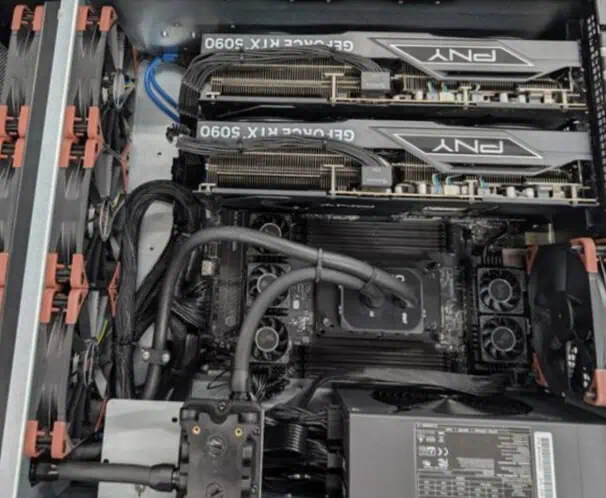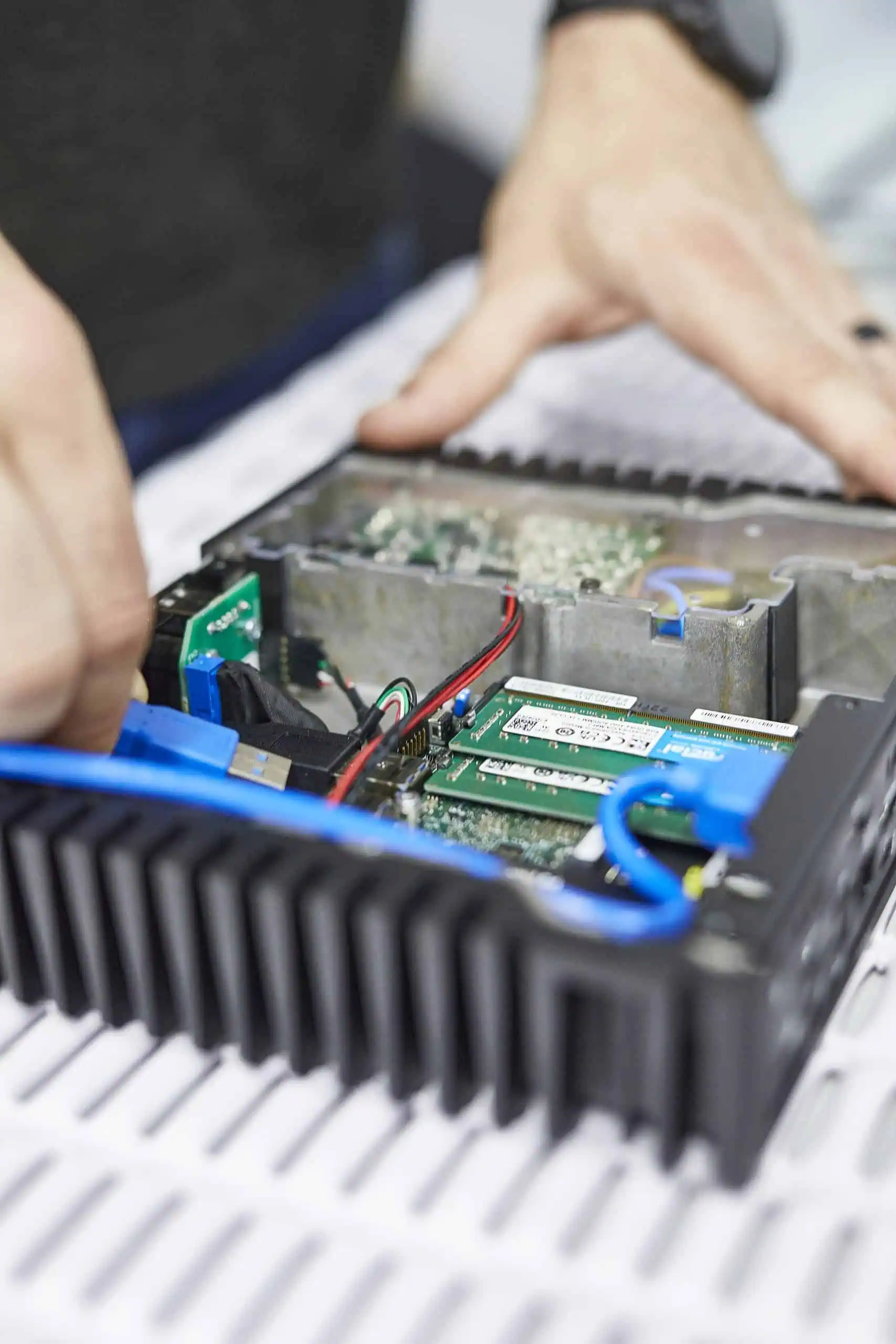When it comes to graphics cards there are generally two manufacturers who stand apart from the competition as industry-standard choices for professionals – AMD and NVIDIA.
A perennial question asked by many of our customers is why are NVIDIA Quadro and AMD workstation cards so much more expensive than equivalent gaming graphics cards, when they often appear to do much the same job. The Quadro A6000 Ada Lovelace Workstation, for example, retails at almost £8,400 compared with £1,949.99 for the NVIDIA RTX 4090 series which are marketed toward gamers. Compared with some equivalent AMD graphics cards, for example the RX 7900 XTX series, the price difference is even more stark, with some retailing at almost a tenth of the price.
Surely a card that retails at ten time the cost of the competition must deliver ten times the performance, right?
Well, not quite because the graphics core powering workstation graphics cards are often identical and no amount of marketing doublespeak makes a chip with the same design and manufacture, perform that much better.
The main reason for the significant difference in price is that the target audience for the NVIDIA and AMD workstation cards tends to be professional video, graphics and 3D designers working for production studios, oil and gas exploration companies and architecture practices, willing to pay a premium for advantages in performance, quality and accuracy.
Despite their similarities, running the same chip, there are several differences between the NVIDIA Quadro and the same company’s GeForce graphics processing units (GPUs).
For starters, NVIDIA controls the specifications and quality assurance on all Quadro cards, unlike on GeForce cards, which are left to board partners.
So, a Quadro card will only have display port outputs and more of them. They are single slot cards so fit in smaller cases and are hardware validated. It will have better reliability, due to extended testing, lower power consumption and heat output and it will be equipped with a larger memory frame buffer that features error correction technology.
The Quadro will have special drivers, validated for seamless operation on professional grade applications such as 3D modelling and animation.
Finally, Quadro cards have one key feature enabled in manufacturing that lies dormant, on most GeForce cards, giving users a wider range of fractional values to work within to ensure greater calculation precision.
Taken together, these advantages mean the workstation card is less susceptible to random errors, works more reliably and for longer, and can perform calculations and draw images with a much greater degree of precision than its consumer-grade counterpart.
But how does the Quadro stand-up to the equivalent, but significantly less expensive competition? Quadro and AMD Radeon Pro cards are both professional-grade graphics cards designed for similar video editing, 3D rendering, and other graphics-intensive tasks.
In simple terms it could be said that Quadro cards are optimized for stability, while AMD Radeon Pro cards are optimized for performance.
Professionals performing dense rendering tasks, machine learning or AI will want a machine with VRAM – and the more the better. The increased latency plus slower speeds from RAM alone will not be enough for really demanding applications, which is why VRAM matters, irrespective of how much RAM is installed or how fast the CPU might be.
While AMD workstation GPUs have always lagged behind their NVIDIA counterparts, things appear to be changing.
The AMD Radeon W6400, for example, offers decent quality at an affordable price for smaller form-factor machines while the W6800 workstation GPU – built around AMD’s 7nm RDNA 2 architecture – has extensive ISV driver certification for bigger scientific, engineering, and creative professional applications.
It features 32GB of high-speed ECC GDDR6 RAM, contains almost 27billion transistors, and has 3,840 stream processors in 60 compute units that are capable of a theoretical 1,783 teraflops of FP32 performance. It also sports six display outputs as opposed to the flagship NVIDIA card, which only supports four.
The equivalent NVIDIA RTX A6000 – it is the first in the range to drop the Quadro branding but remains a Quadro in all but name – comes with 48GB of dedicated GDDR6 VRAM and a peak teraflop performance of 3,870, offering more than twice the amount offered by the AMD model.
It may be around twice the price, but if you’re going for a single GPU build on your workstation and require maximum performance, it may be the one to go for.
The first workstation GPU to be built on the NVIDIA Ampere architecture and is also the first to support PCIe Gen 4, it has certified drivers for most pro applications, reliability, ECC memory and plenty of niche features for specialist users.
There’s also support for NVIDIA virtual GPU (vGPU) software, which allows a workstation to be repurposed into multiple high-performance virtual workstation instances. With 48GB of VRAM, the A6000 also has the most memory of any professional GPU on the market. For high-performance rendering, it’s really in a league of its own.
At a glance
GeForce Pros
- Faster clock speeds
- Versatility and value
- Multi-connectivity monitor support
- Best for: Budget CAD, amateur video
Quadro Pros
- Specific Render tasks
- Extreme Power
- Double precision computations
- Durability
- Best for: Certain scientific and data calculations, CAD rendering, professional-grade video production, 3D creation
AMD Workstation Pros
- AMD RDNA 3 Architecture
- Advanced Chiplet Design
- Dedicated AI Acceleration and Second-Generation Raytracing
- Up To 48 GDDR6 Memory
- AMD Radiance Display Engine with DisplayPort 2.
- AV1 Encode/Decode
- Best for: Demanding creative, production, and visualization workloads
Get in touch for more information on any of these products which are available in G2 Digital rack mounted systems. Our experts can work directly with you to design and build a bespoke or tailored solution. Contact our team on +44(0) 333 880 4242 or drop us an email.








